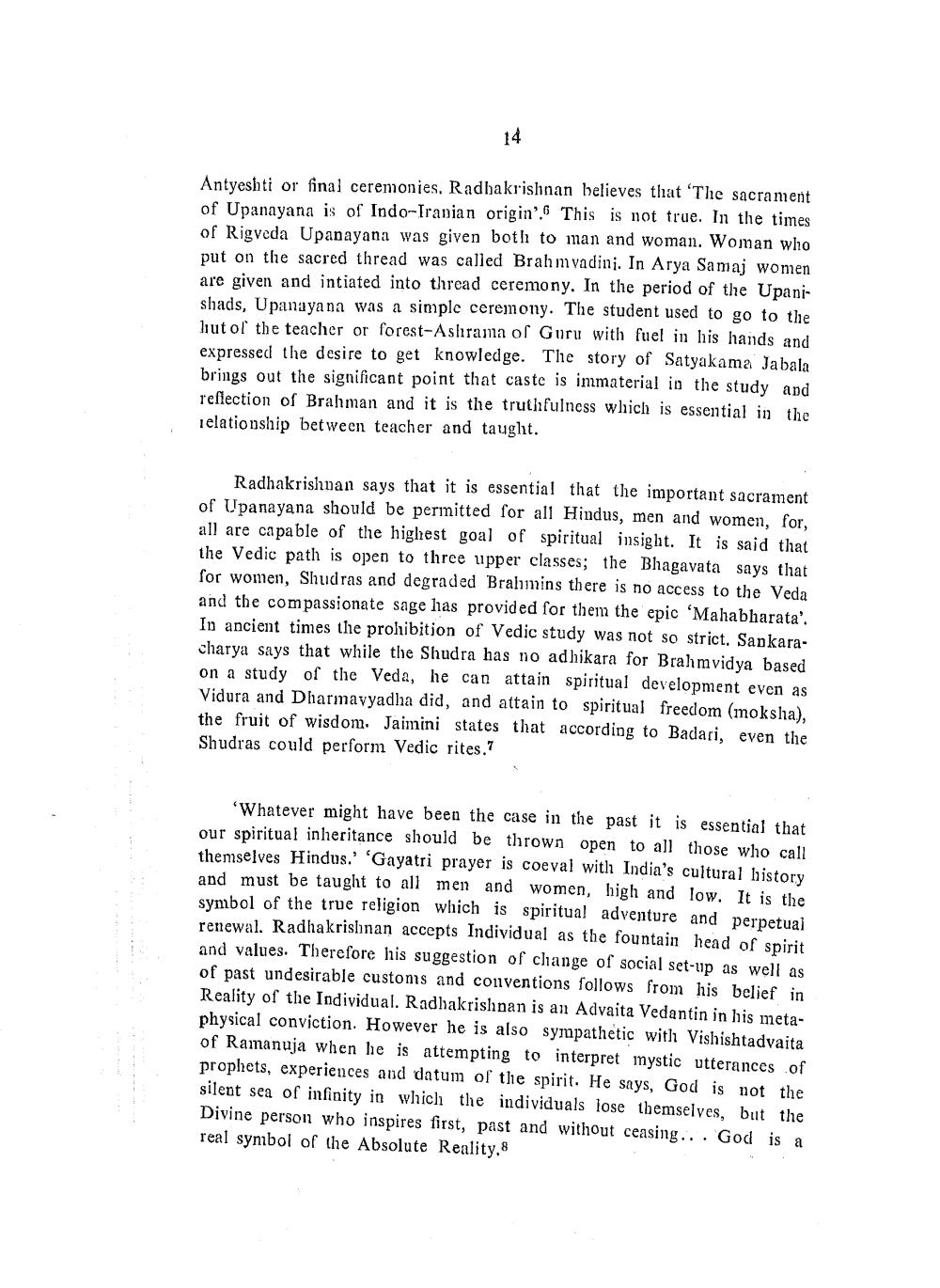________________
Antyeshti or final ceremonies, Radhakrishnan believes that 'The sacrament of Upanayana is of Indo-Iranian origin'. This is not true. In the times of Rigveda Upanayana was given both to man and woman. Woman who put on the sacred thread was called Brahmvadinj. In Arya Samaj women are given and intiated into thread ceremony. In the period of the Upanishads, Upanayana was a simple ceremony. The student used to go to the lut of the teacher or forest-Ashrama of Guru with fuel in his hands and expressed the desire to get knowledge. The story of Satyakama Jabala brings out the significant point that caste is immaterial in the study and reflection of Brahman and it is the truthfulness which is essential in the relationship between teacher and taught.
Radhakrishnan says that it is essential that the important sacrament of Upanayana should be permitted for all Hindus, men and women, for, all are capable of the highest goal of spiritual insight. It is said that the Vedic path is open to three upper classes; the Bhagavata says that for women, Shudras and degraded Brahmins there is no access to the Veda and the compassionate sage has provided for them the epic 'Mahabharata'. In ancient times the prohibition of Vedic study was not so strict. Sankaracharya says that while the Shudra has no adhikara for Brahmvidya based on a study of the Veda, he can attain spiritual development even as Vidura and Dharmavyadha did, and attain to spiritual freedom (moksha), the fruit of wisdom. Jaimini states that according to Badari, even the Shudras could perform Vedic rites.?
"Whatever might have been the case in the past it is essential that our spiritual inheritance should be thrown open to all those who call themselves Hindus.' 'Gayatri prayer is coeval with India's cultural history and must be taught to all men and women, high and low. It is the symbol of the true religion which is spiritual adventure and perpetual renewal. Radhakrishnan accepts Individual as the fountain head of spirit and values. Therefore his suggestion of change of social set-up as well as of past undesirable customs and conventions follows from his belief in Reality of the Individual. Radhakrishnan is an Advaita Vedantin in his metaphysical conviction. However he is also sympathetic with Vishishtadvaita of Ramanuja when he is attempting to interpret mystic utterances of prophets, experiences and datum of the spirit. He says, God is not the silent sea of infinity in which the individuals lose themselves, but the Divine person who inspires first, past and without ceasing... God is a real symbol of the Absolute Reality, 8




